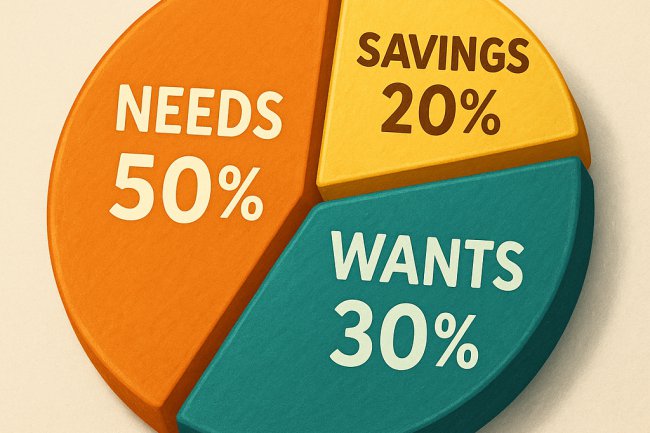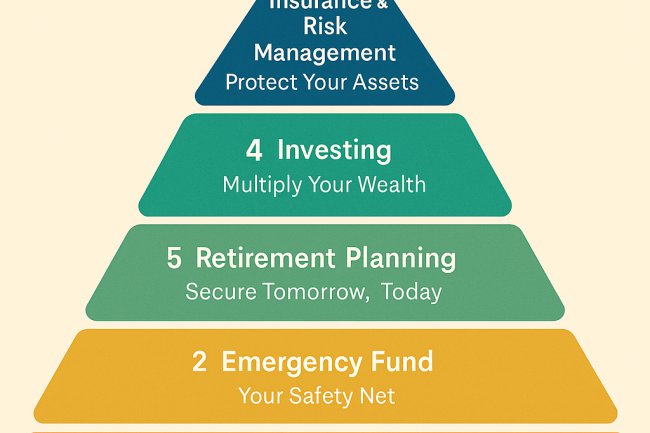The African Wealth Blueprint
Discover how Africans are building wealth the local way. Learn how SACCOs, Money Market Funds, and Chamas are helping millions achieve financial independence without Wall Street.

Building Wealth the Local Way
Introduction: You Don’t Need Wall Street — You Need Strategy
When people think of wealth, they often imagine New York Stock Exchange tickers, Silicon Valley tech startups, or Wall Street bankers in suits.
But real wealth doesn’t only grow in skyscrapers — it grows in communities, SACCOs, money market funds, and disciplined saving circles across Africa.
Africa has its own wealth blueprint — rooted in collaboration, consistency, and community capital.
You don’t need Wall Street to build wealth.
You need structure, patience, and a plan that works where you live.
This is how smart Africans are quietly building passive income and financial independence using local systems that are simple, powerful, and time-tested.
1. SACCOs — The Engine of Collective Wealth
What Is a SACCO?
A Savings and Credit Cooperative Organization (SACCO) is a member-owned financial institution where individuals pool savings to lend to each other at affordable interest rates.
In countries like Kenya, SACCOs have become the backbone of the middle class, helping millions own homes, educate children, and build businesses.
How It Works:
-
Members contribute monthly savings.
-
The pooled money funds low-interest loans.
-
Profits are shared as annual dividends.
Why It Works:
-
It combines discipline and access — saving consistently while earning returns.
-
You gain both ownership and borrowing power.
Real Example:
A member contributing KSh 10,000 monthly earns dividends averaging 10–12% per year and can access low-interest loans for business expansion or property purchase.
Wealth Insight:
SACCOs turn saving into community-based investing — you grow wealth while uplifting others.
2. Money Market Funds (MMFs) — The Smart Parking Lot for Cash
What Is a Money Market Fund?
An MMF is a low-risk investment vehicle that pools funds from investors and places them in short-term, interest-bearing assets like government securities and corporate bonds.
It’s ideal for people who want their idle money to earn returns — while maintaining easy access to cash.
Benefits:
-
Daily compounding interest.
-
Liquidity (withdraw anytime).
-
Higher returns than a regular bank account.
Example Returns:
In Kenya, MMFs from top firms like NCBA, Britam, and Cytonn yield between 9% and 12% per year, depending on market performance.
In Nigeria, firms like Cowrywise and ARM offer similar products through regulated collective investment schemes.
Strategy:
Use MMFs as your financial buffer zone — for emergency funds, savings goals, or holding cash while you plan your next big investment.
Wealth Insight:
The rich never let money sleep — even short-term cash earns interest.
3. Chamas — The Power of Collective Investing
What Is a Chama?
A Chama is an informal investment group — typically friends, colleagues, or family — that saves and invests together.
It’s one of the oldest forms of community finance in Africa, blending social trust with economic empowerment.
How It Works:
-
Members contribute an agreed amount regularly.
-
Funds are invested in assets like land, housing, or business ventures.
-
Profits are shared equally or reinvested.
Benefits:
-
Shared risk, shared reward.
-
Encourages accountability through group discipline.
-
Builds investment knowledge and confidence.
Modern Chamas:
Today, many Chamas operate like investment clubs — with constitutions, digital accounting, and formal bank accounts. Some evolve into companies or SACCOs over time.
Wealth Insight:
You don’t need to start rich — you need to start together.
4. Treasury Bonds and Bills — The African Investor’s Secret
What Are They?
Government-issued securities that pay fixed interest to investors who lend money to the government for a specific period.
-
Treasury Bills: Short-term (91, 182, or 364 days).
-
Treasury Bonds: Long-term (2–20 years).
Why They Work:
They’re low-risk, predictable, and pay steady interest — ideal for conservative investors.
Example:
In Kenya, Treasury Bonds pay between 12% and 16% per annum, depending on the term.
In Nigeria, the Debt Management Office (DMO) issues similar instruments, offering attractive returns compared to savings accounts.
Wealth Insight:
When you lend to your government wisely, your money earns even while you sleep.
5. Real Estate and Land — The Tangible Path to Generational Wealth
Real estate remains one of the most trusted forms of wealth in Africa.
From rental properties to farmland, Africans understand that land doesn’t depreciate — it appreciates in both value and legacy.
How to Start:
-
Join real estate investment groups through SACCOs or Chamas.
-
Start small with serviced plots or joint investments.
-
Consider Real Estate Investment Trusts (REITs) for low-entry property exposure.
Wealth Insight:
Real wealth is not about owning everything — it’s about owning what lasts.
6. Digital and Mobile Investment Platforms
Africa’s digital revolution has opened up opportunities to invest from your phone — safely and easily.
Examples:
-
Kenya: Abojani, Faida Invest, Safaricom’s Mali platform.
-
Nigeria: Bamboo, Trove, Cowrywise, Risevest.
-
South Africa: EasyEquities, Franc, Satrix.
Why They Matter:
They democratize investing — making it accessible to anyone with a smartphone and internet connection.
With as little as $10, you can invest in global ETFs, local stocks, or mutual funds.
Wealth Insight:
Technology has made global investing local — the tools are in your hands.
7. The African Wealth Mindset
Wealth isn’t just built through numbers — it’s built through mindset.
Successful African investors think long-term, not month-to-month.
They focus on ownership, collaboration, and patience.
Key Traits to Adopt:
-
Consistency: Save and invest every month, no matter the amount.
-
Community: Leverage group strength through SACCOs and Chamas.
-
Diversification: Mix local and digital investments.
-
Education: Keep learning about money, markets, and opportunities.
The Blueprint in Action
Scenario Example:
Jane, a young professional in Nairobi, divides her income into:
-
20% to her SACCO (savings and loan access)
-
10% to a money market fund (short-term liquidity)
-
10% to her Chama (group investment in land)
-
5% to Treasury Bonds (passive income)
-
5% to a digital investment app (global diversification)
By aligning her habits with her environment, she builds wealth from the ground up — no Wall Street required.
Conclusion: The Future of African Wealth
Africa doesn’t lack opportunity — it lacks structure and awareness.
But those who understand how to use local financial systems will thrive in the coming decades.
From SACCOs to MMFs, Chamas to digital platforms, the African wealth revolution is already happening — one disciplined saver at a time.
The new generation of African investors isn’t waiting for foreign markets.
They’re building their own.
You don’t need Wall Street. You need strategy, community, and consistency.
That’s the true African Wealth Blueprint.
What's Your Reaction?




















